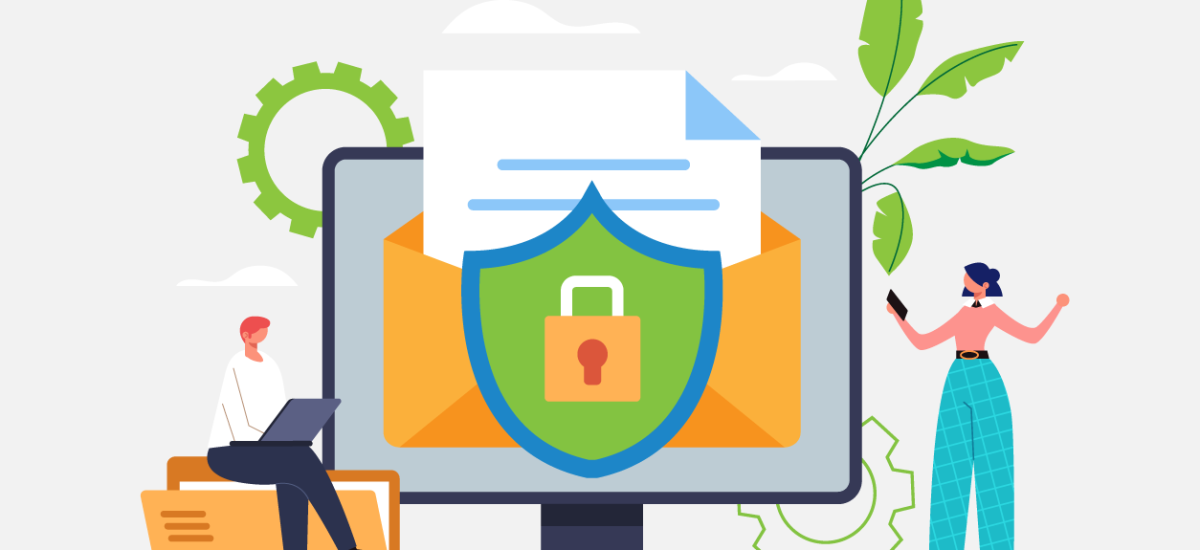Keeping your emails safe and your brand shiny!
Businesses and organisations face all sorts of cyber threats as technology continues to evolve. One of the sneakiest and most damaging ones is phishing and spoofing attacks through emails. These attacks can steal sensitive info and harm your reputation.
But don’t worry! There’s a superhero in the world of email security – DMARC (Domain-based Message Authentication, Reporting & Conformance). In this blog, we’ll explore what DMARC is, and why it’s a must-have for businesses and other organisations, highlighting its perks, how to get it up and running, and the overall boost it gives to your email security.
Webinar
Watch the brilliant Elliot Wilkie get in-depth with email security, SPF, DKIM, and DMARC in a webinar held last week.
If you don’t have the time, here’s a rundown.
Getting to know DMARC
So, what is DMARC?
- DMARC (Domain-based Message Authentication, Reporting and Conformance) is an email security protocol that helps email domain owners protect their domains from unauthorised use (aka email spoofing).
- By using DMARC, you can make sure that legit emails are authenticated against DKIM (DomainKeys Identified Mail) and SPF (Sender Policy Framework) standards, and that any sneaky business gets reported.
How does DMARC work?
Think of email security like sending a package.
- SPF is like a list of approved delivery drivers—you decide which ones are allowed to send mail on your behalf.
- DKIM is like sealing the package with a tamper-proof sticker, ensuring it hasn’t been opened or altered.
- DMARC is the final rulebook—it checks if the driver (SPF) and the seal (DKIM) are valid and tells the recipient what to do if something looks suspicious (reject, quarantine, or accept the email).
Basically, DMARC ties everything together to keep phishing and fake emails out of inboxes.
Why DMARC is awesome!
Boosted email security
DMARC’s main job is to ramp up email security. By setting up DMARC, businesses can seriously cut down the risk of phishing and spoofing attacks. It makes sure that emails claiming to be from your domain really are legit, keeping your team, customers, and partners safe from the bad guys.
Protecting your brand’s reputation
Nobody likes a tarnished reputation. If customers get phishing emails pretending to be from your company, they might lose trust in your brand. DMARC helps keep your brand’s name clean by stopping unauthorised use of your domain in emails.
Better email deliverabilty
Emails that don’t pass authentication checks are more likely to end up in the spam folder or get rejected. By using DMARC, you ensure that your legit emails make it through, improving your email deliverability rates. This is super important for marketing campaigns, customer communications, and any other email-related activities.
Insightful reporting
DMARC gives domain owners valuable insights and reports on email activities. These reports help you keep an eye on your email ecosystem, spot potential abuse, and make smart decisions about your email security policies. The visibility you get from DMARC reporting is key to understanding how your domain is being used and misused.
“Without DMARC reporting, domain owners’ visibility of their email environments decreases, which can make them more vulnerable to cyberthreats. Using security measures, including adopting reporting and monitoring tools, is essential to maintain defences and compliance.”
How to Get DMARC Up and Running
Steps to Implement DMARC
- Step 1: Check Your Email Environment – Get a grip on your current email setup and identify all the domains you use for sending emails.
- Step 2: Set Up SPF and DKIM – Make sure SPF and DKIM are properly configured for your domains. These are must-haves before DMARC.
- Step 3: Create a DMARC Record – Create a DMARC policy for your domain by adding a DMARC record to your DNS. This record tells email providers how to handle emails that don’t pass the checks.
- Step 4: Monitor and Tweak – Start with a DMARC policy set to “none” to see how your emails are being processed. Use the reports to identify and fix any issues before enforcing stricter policies.
- Step 5: Enforce DMARC – Gradually move to a “quarantine” or “reject” policy to take action on emails that fail authentication. This step makes sure that dodgy emails are blocked or flagged.
Challenges and Tips
While setting up DMARC might sound simple, there can be bumps along the way. Make sure all legit email sources are covered and authenticated. Regularly review and update your DMARC policy to keep up with changes in your email setup. Using third-party tools and services can make the process easier and provide ongoing support.
The Impact of DMARC on Email Security
Success Stories
Many organisations have successfully implemented DMARC and seen big improvements in email security. For example, major financial institutions have reported a huge drop in phishing attempts targeting their customers. Big e-commerce platforms have noted increased customer trust and fewer instances of brand impersonation.
Wrapping It Up
So, DMARC is a must-have tool for businesses and organisations looking to secure their email communications and protect their brand reputation. Its ability to authenticate emails, boost deliverability, and provide valuable insights makes it a cornerstone of modern email security strategies. By investing in DMARC, businesses not only protect their digital presence but also build trust and confidence with their stakeholders. As the digital landscape continues to change, the importance of having DMARC can’t be overstated, making it an essential part of any comprehensive cybersecurity plan.

